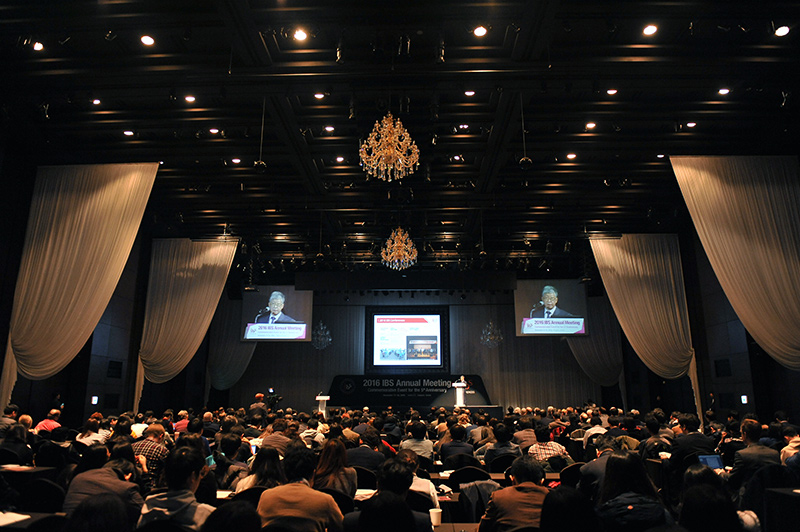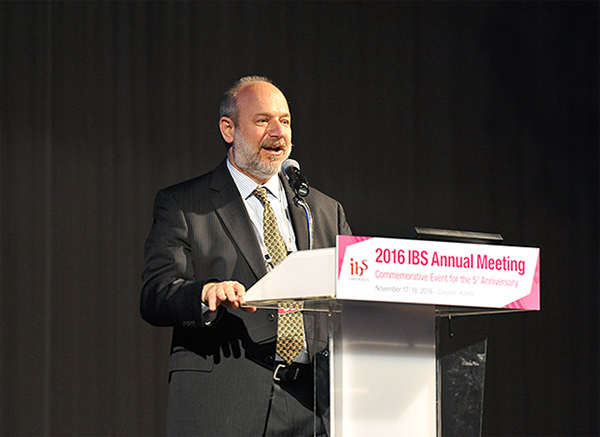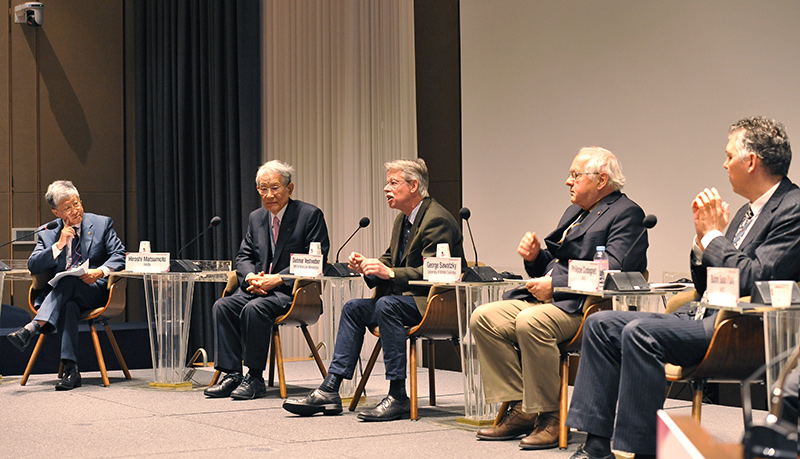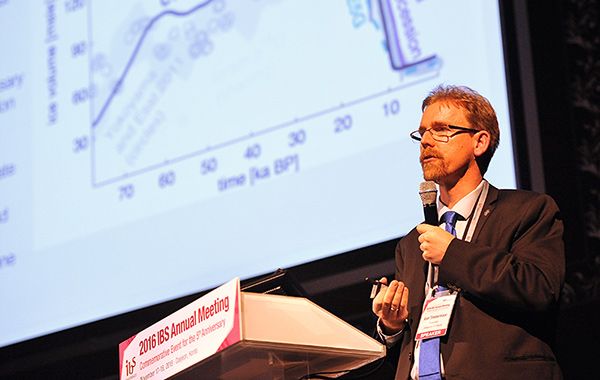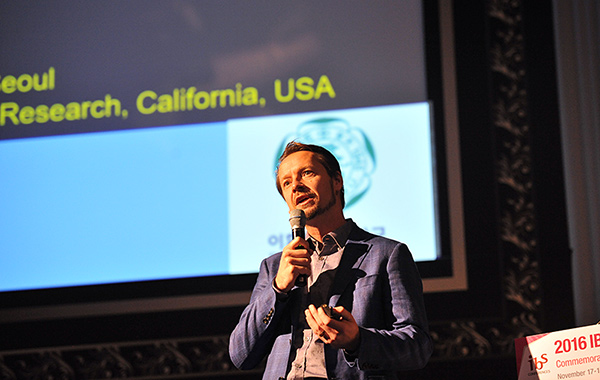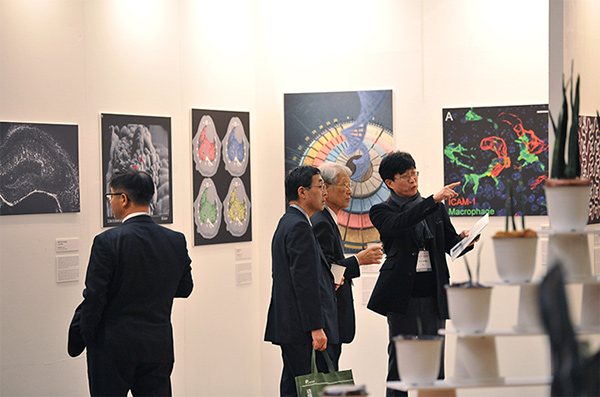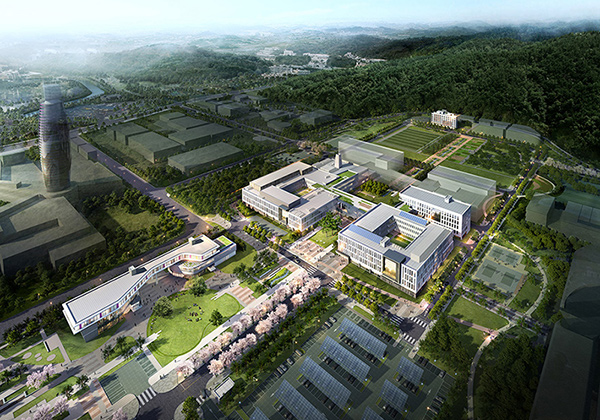주메뉴
- About IBS 연구원소개
-
Research Centers
연구단소개
- Research Outcomes
- Mathematics
- Physics
- Center for Theoretical Physics of the Universe(Particle Theory and Cosmology Group)
- Center for Theoretical Physics of the Universe(Cosmology, Gravity and Astroparticle Physics Group)
- Center for Exotic Nuclear Studies
- Center for Artificial Low Dimensional Electronic Systems
- Center for Underground Physics
- Center for Axion and Precision Physics Research
- Center for Theoretical Physics of Complex Systems
- Center for Quantum Nanoscience
- Center for Van der Waals Quantum Solids
- Chemistry
- Life Sciences
- Earth Science
- Interdisciplinary
- Center for Neuroscience Imaging Research(Neuro Technology Group)
- Center for Neuroscience Imaging Research(Cognitive and Computational Neuroscience Group)
- Center for Algorithmic and Robotized Synthesis
- Center for Genome Engineering
- Center for Nanomedicine
- Center for Biomolecular and Cellular Structure
- Center for 2D Quantum Heterostructures
- Center for Quantum Conversion Research
- Institutes
- Korea Virus Research Institute
- News Center 뉴스 센터
- Career 인재초빙
- Living in Korea IBS School-UST
- IBS School 윤리경영


주메뉴
- About IBS
-
Research Centers
- Research Outcomes
- Mathematics
- Physics
- Center for Theoretical Physics of the Universe(Particle Theory and Cosmology Group)
- Center for Theoretical Physics of the Universe(Cosmology, Gravity and Astroparticle Physics Group)
- Center for Exotic Nuclear Studies
- Center for Artificial Low Dimensional Electronic Systems
- Center for Underground Physics
- Center for Axion and Precision Physics Research
- Center for Theoretical Physics of Complex Systems
- Center for Quantum Nanoscience
- Center for Van der Waals Quantum Solids
- Chemistry
- Life Sciences
- Earth Science
- Interdisciplinary
- Center for Neuroscience Imaging Research(Neuro Technology Group)
- Center for Neuroscience Imaging Research(Cognitive and Computational Neuroscience Group)
- Center for Algorithmic and Robotized Synthesis
- Center for Genome Engineering
- Center for Nanomedicine
- Center for Biomolecular and Cellular Structure
- Center for 2D Quantum Heterostructures
- Center for Quantum Conversion Research
- Institutes
- Korea Virus Research Institute
- News Center
- Career
- Living in Korea
- IBS School
News Center
| Title | Happy Birthday IBS: +5! | ||||
|---|---|---|---|---|---|
| Name | Department of Communications | Registration Date | 2016-11-24 | Hits | 4063 |
| att. |
 thumb.jpg
thumb.jpg
|
||||
Happy Birthday IBS: +5!- The 2016 IBS Annual Meeting, two-day event in Daejeon celebrated the fifth anniversary of IBS and featured special guests, scientific conferences, public talks and an Art in Science exhibition - It has been five years since the foundation of the Institute for Basic Science (IBS) in November 2011. IBS is the first dedicated basic science research institute in Korea and home to returning scientists as well as attracting the attention of the international scientific community. On the occasion of its fifth anniversary, IBS organized a variety of events to recall the milestones reached so far and to outline its future path. The two-day celebration included conferences, public talks and an Art in Science exhibition. Members from world leading research institutes such as Max Planck Institutes (Germany), RIKEN (Japan), and The National Center for Scientific Research (France) participated in the event to share knowledge and insights into basic science research. The conferences and talks were held from November 17 to 18, at Hotel ICC and Lotte City Hotel in Daejeon. The event began with congratulatory remarks from CHOI Yanghee (Minister of Science, Information and Communications Technology and Future Planning ), Philippe Condognet (on behalf of the President of the National Center for Scientific Research), Hiroshi Matsumoto (President of RIKEN) and IBS President KIM Doochul. With the vision 'Making Discoveries for Humanity and Society', IBS' seeks fundamental knowledge about nature and applies it for a sustainable society. IBS supports large-scale, long-term group research. "We will strive to become a global research hub where IBS Centers serve as a catalyst for networking and collaborations in the global science community," enthused President Kim.
IBS PeopleCurrently, IBS counts on more than 2,000 researchers, of whom 26% are international, and 318 technical and administrative staff. By guaranteeing autonomy in research, IBS scientists are rising as key players to watch in the global science community. During his remarks, the IBS President mentioned some of the institute's highlights of this year: The 2016 Feynman Prize in Nanotechnology awarded to Bartosz A. Grzybowski, (Center for Soft and Living Matter) for developing a model, called Chematica, that allows for computer-assisted organic synthesis, the 12th Kyung Ahm Foundation Award obtained by IHEE Hyotcherl (Center for Nanomaterials and Chemical Reactions) and the 2016 Korean Physical Society Prize. IBS also gained the attention of the international community by being spotlighted as a major new player to watch in the Nature Index 2016 Rising Star supplement. IBS AchievementsIBS scientists are making their mark by publishing outstanding research papers. A research group led by BAIK Mu-Hyun at the IBS Center for Catalytic Hydrocarbon Functionalizations devised a method for catalyzing reactions with methane., allowing for the easy manipulation of methane thereby converting it to liquid methanol, making it easier to transport for fuel. Another research group led by HEO Won Do at the IBS Center for Cognition and Sociality reported a new protein called OptoSTIM1 that controls cellular calcium channels. Their work opens the door for future research in memory and learning, and for possible applications in diseases with calcium regulation dysfunction, such as Alzheimer's. These are just two bites of the remarkable projects that IBS scientists have been conducting since its foundation. A new book, containing all major achievements in the last five years, is soon to be published in both English and Korean. IBS Fifth Anniversary: Plenary lecture by a Nobel Prize winner
The first Plenary Lecture was led by the 2011 Nobel Laureate in Physiology or Medicine Bruce Beutler (University of Texas Southwestern Medical Center, USA). He co-won the Nobel for his discoveries concerning the activation of innate immunity and his career focused on using genetics to learn about the immune system. He presented how his research team tracks down which DNA mutations cause particular effects and diseases on mice, such as dystonia, cancer, addiction etc. Genetic mapping tools have enabled the researchers to find the effects of several new mutations and test one third of all proteins of mice. His talk was introduced by a remarkable speech by JUNG Seohui, a high-school student selected by IBS to participate in the 2016 Asian science camp. IBS fifth anniversary: Round tableIBS, as a leader of basic science in Korea, has the vision to initiate a paradigm shift by conducting research that is difficult to be undertaken solely by universities. To realize its goals, the support of the basic science community and societal consensus are essential. The event included a round table discussion titled 'Fostering Basic Science in Korea & IBS'. After an introduction from Professor PARK Buhm Soon (Graduate School of Science and Technology, KAIST) summarizing the historical and political path that brought IBS to its present situation, the participants had the opportunity to listen to the suggestions given by the Hiroshi Matsumoto (RIKEN's President), Dietmar Vestweber (Director of MPI for Molecular Biomedicine), George Sawatzky (Professor of University of British Columbia) and Philippe Condognet (Director of the Regional Office of CNRS for North Asia). All panellists of the round table agreed that basic science must be curiosity-driven and that autonomy is fundamental to this. These institutes are located in different countries, but they share the same spirit in the advancement of blue-sky research to contribute to national and societal development. "Industry sometimes does not realize what society needs, like the case of the internet," reminded Condognet.
IBS Fifth Anniversary: Public talksDuring the second day of the event, Axel Timmermann (University of Hawaii, USA) and Andreas Heinrich (Ewha Womans University, South Korea) gave a public science talk. Timmermann, a leader in climate dynamics, explained how his computer models simulate the ice-ages and human migrations over time. His latest calculations connect data on the wobble of Earth's axis, with climate and human migration over the past 125,000 years in order to predict how our ancestors moved out of Africa. The professor also pointed out how paleo-climate data collected from ice sediments and ice cores can be compared with available fossils, archaeological remains and genetic evidence. This model sees the arrival of Homo sapiens to Europe around 80,000-90,000 years ago, about 45,000 years earlier than the current theories. Heinrich, before moving to Korea, had previously worked as a researcher in IBM Almaden Research Center in California. He presented his studies on the scanning tunnelling microscope. The microscope features an extremely sharp needle that his team used to reposition individual atoms and build the smallest magnetic storage device in the world. While in our memory hard drives a single bit requires about one million atoms, they made a bit with only two rows of six iron atoms on a surface of copper nitride. Heinrich also played the Guinness World Record smallest stop-motion film. Measuring only 45x25 nanometers, the story features a boy, who befriends and dances with an atom. Both characters are actually atoms of carbon monoxide and the action is created by moving atoms, one at a time, across a copper surface.
IBS Fifth anniversary: ConferencesThe second day of the event also included three parallel scientific conferences co-organized with other international institutes. A conference on vascular biology and a conference on material physics were organized in collaboration with the German Max Planck Institute (MPI) and a conference on recent developments in rare isotope physics was jointly organized with the Japanese research institute RIKEN. The IBS-MPI Vascular Biology Conference was the opportunity to hear from ten speakers in this field, including KOH Gou Young (Director of IBS Center for Vascular Research), Ralf H. Adams (Max Planck Institute for Molecular Medicine Research). Steve Granick (Director of IBS Center for Soft and Living Matter), Mischa Bonn (Director of the Max Planck Institute for Polymer Research) along with eight other speakers all presented at the IBS-MPI Conference on Material Physics. The IBS-RIKEN Rare Isotope Physics Conference shared the latest research results in rare isotope physics and featured ten speakers, including JEONG SunChan (chief of the Rare Isotope Science Project) and Hiroyoshi Sakurai (RIKEN Nishina Center for Accelerator-Based Science). IBS Fifth Anniversary: Getting artyDuring the event, the Art in Science exhibition - a science-art fusion project - was jointly organized by IBS and the Daejeon Museum of Art in the ICC Hotel Conference Center. IBS scientists submitted 16 images that celebrate the beauty of science and discovery in the invisible world.
The exhibition also featured artwork created through collaborations between IBS researchers and artists KIM Soo-Yeon and SON Kyung-Hwan. Inspired by researchers' perseverance, Kim recreated plant compositions obtained from the IBS Center for Plant Aging Research to manifest the perpetuity of a plant's life. Son worked with scientists from the Center for Axion and Precision Physics Research, and connected the scientific pursuit of dark matter with his curiosity of the universe in a periscope-shaped artwork. "As science and art are highly intelligent experiences and assets, the interaction of scientists and artists offers new insights. I hope that the joint project between IBS and the Daejeon Museum of Art gives many people a new impression of science and also inspires interest in it," pointed out President Kim. Participants of the event were asked to vote for their favorite image. The exhibition was connected with a Facebook competition, concluding with a draw for 100 gifts. The images will be displayed at the Daejeon Museum of Art. IBS' Future PlansStarting at the end of the next year, IBS will move into its new HQ. "We envision that the new IBS HQ Complex will grow into an urban science park that serves as the hub for global talents, multidisciplinary research laboratory, and a catalyst for disseminating knowledge," commented the IBS President. IBS will continue to attract top-notch scientists, and will incorporate up to 50 centers by 2021. Two new IBS centers will open early next year.
Coinciding with the IBS HQ, there is another ambitious project. A world-class facility for ion-accelerator named RAON is slated for completion by 2021. By using both Isotope Separation On-Line (ISOL) and In-flight Fragment (IF) techniques, RAON will enable scientists to make major scientific advances. IBS will also continue to foster the next science leaders with the Young Scientist Fellowship (YSF). This is the most prestigious fellowship for basic science in Korea and enables young scientists to lead research projects. Blowing its first five candles, IBS' ambitious wish is to lead the paradigm shift in basic science research and to become a place where researchers can start their own scientific quests with full autonomy. Believing that autonomy in research maximizes researchers' creativity; IBS will continue to support curiosity-driven, bottom-up research. Letizia Diamante |
|||||
| Next | |
|---|---|
| before |
- Content Manager
- Public Relations Team : Yim Ji Yeob 042-878-8173
- Last Update 2023-11-28 14:20










